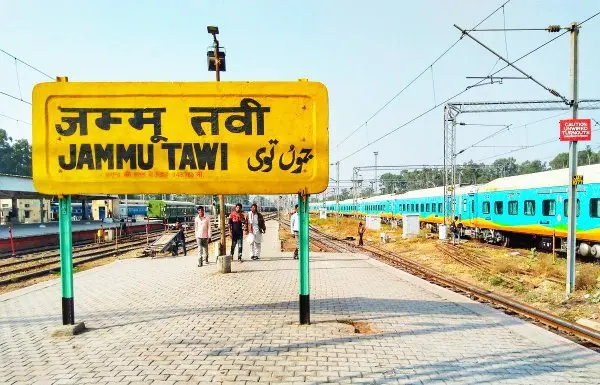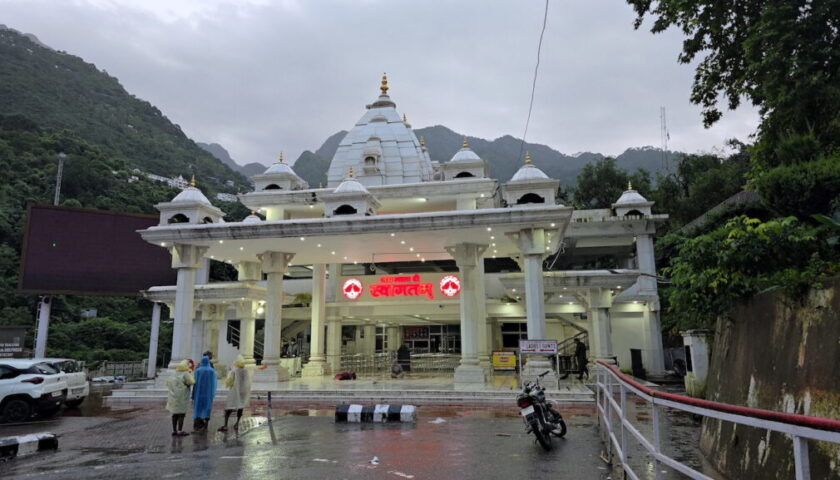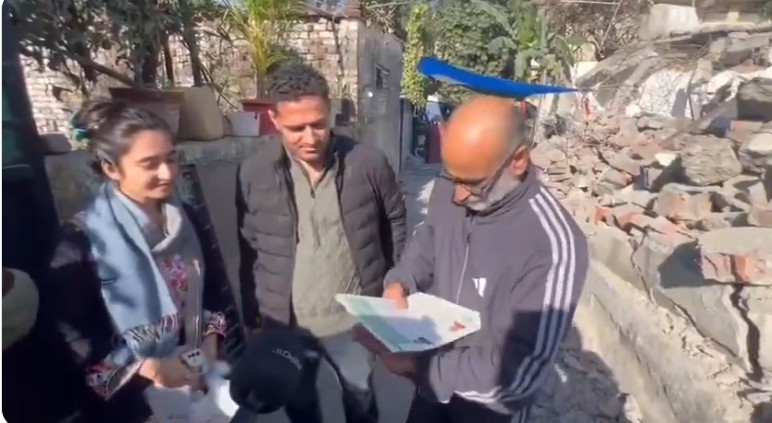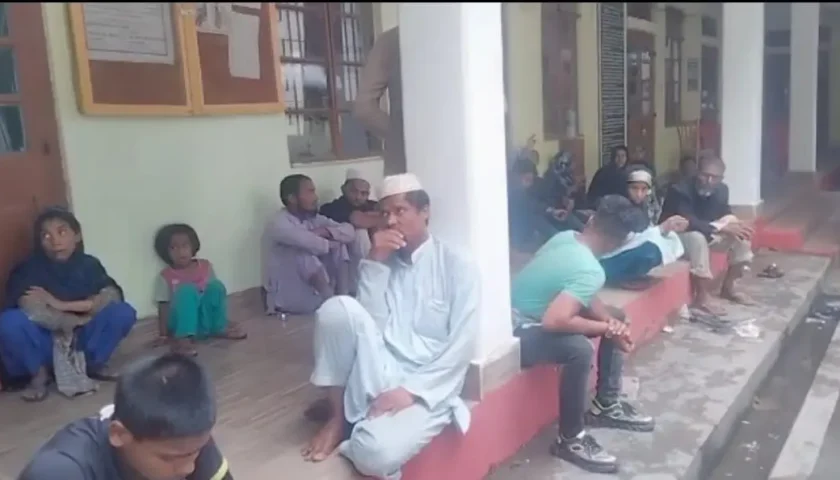Jammu Rail Division shows grit as partial services restored
Tracks of Tenacity
In the wake of record-breaking monsoon rains that lashed Jammu & Kashmir in late August 2025, the Jammu Rail Division faced one of its most severe operational crises in decades. Landslides, flash floods, and damaged power lines brought rail traffic to a grinding halt, stranding thousands of passengers—including pilgrims en route to the Vaishno Devi shrine.
Yet, within days, the division began restoring partial services, launching emergency shuttle routes and mobilizing ground teams with remarkable speed. This is not just a story of infrastructure recovery—it’s a testament to grit, coordination, and public service under pressure.
Monsoon Disruption and Infrastructure Collapse
Rainfall Records and Impact
Jammu city recorded over 380 mm of rainfall in less than 38 hours, the highest in decades. The downpour triggered:
- Flash floods across low-lying zones
- Landslides blocking key rail corridors
- Power outages and track misalignments
- Bridge damage on the Pathankot–Jammu section
Rail traffic on the Jammu–Pathankot and Jammu–Katra routes was suspended, affecting over 58 trains. Bridges 17 and 137 sustained extensive damage, requiring urgent structural assessments.
Emergency Response and Passenger Support
Ground-Level Coordination
Railway staff, GRP, and district officials sprang into action:
- Help desks were set up at Jammu Tawi, Katra, and Pathankot stations
- Food, water, and shelter were provided to stranded passengers
- Senior officials, including the General Manager of Northern Railway, were physically present to oversee operations
Over 5,784 stranded passengers were ferried out via special trains in the first four days.
Pilgrimage Disruption
The Vaishno Devi pilgrimage was suspended for five consecutive days. With Katra station submerged and access roads blocked, thousands of devotees were stranded. The Railways prioritized their evacuation and safety, rerouting trains and offering full refunds.
Restoration Begins—Partial Services Resume
Key Routes Reopened
By September 1, the following trains were restored:
- New Delhi–Katra (12445) and Katra–New Delhi (12446)
- Kolkata–Jammu (13151) and Jammu–Kolkata (13152)
Six additional trains resumed operations from Jammu Tawi, including:
- Jammu Tawi–Kamakhya Express
- Jammu–Sambalpur
- Jammu–Ambedkar Nagar
- Jammu–Varanasi
- Jammu–Bandra
- Jammu–Chhapra
Shuttle Service: Jammu–Katra Lifeline
To support daily commuters and restoration workers, a special shuttle service was launched between Jammu and Katra. Operating from September 1 to 15, it provides:
- Four daily trains on the Jammu–Katra section
- Priority access for laborers and local passengers
- Flexible scheduling to accommodate restoration logistics
Leadership and Morale
On-Ground Leadership
Senior officials didn’t just issue directives—they showed up. The Divisional Railway Manager and General Manager of Northern Railway were present at key stations, boosting morale and ensuring coordination.
Their presence helped:
- Maintain staff motivation under pressure
- Resolve logistical bottlenecks in real time
- Reassure passengers and local communities
Voices from the Field
“The sheer scale of the disruption would have overwhelmed any system, but the Jammu Division rose to the challenge,” said a senior Railways official.
“It’s not just about trains—it’s about trust. We had to earn it back, one track at a time,” said a station master at Jammu Tawi.
Long-Term Infrastructure Planning
Lessons from the Crisis
The August 2025 monsoon exposed critical vulnerabilities in Jammu’s rail infrastructure. While the Rail Division’s emergency response was commendable, the disruption revealed systemic gaps:
- Drainage systems near tracks were overwhelmed
- Slope stabilization measures were insufficient in landslide-prone zones
- Bridge foundations lacked climate-resilient reinforcement
- Power backup systems were either absent or underpowered
These aren’t just technical oversights—they’re planning failures that must be addressed before the next climate event strikes.
Toward Climate-Resilient Railways
Experts recommend a multi-pronged approach to future-proof Jammu’s rail network:
- Elevated track beds in flood-prone zones
- Geo-engineered slopes with vegetation and retaining walls
- Smart drainage systems with real-time monitoring
- Solar-powered backup grids for signal and communication systems
- Disaster simulation drills for staff and local authorities
The Railways Ministry has already announced a ₹120 crore package for infrastructure upgrades in the Jammu Division, with a focus on climate resilience and disaster readiness.
Climate Adaptation and Regional Strategy
The Bigger Picture
Jammu’s rail disruption is part of a broader climate narrative. With North India experiencing its wettest monsoon since 2013, and Ladakh recording a 930% rainfall surplus, the Himalayas are undergoing a hydrological transformation.
This demands a shift from reactive disaster response to proactive climate adaptation.
Regional Coordination
Railways cannot operate in isolation. A climate-resilient strategy must include:
- Coordination with meteorological departments for predictive alerts
- Integration with state disaster management plans
- Community-based monitoring of vulnerable zones
- Cross-border collaboration with Himachal and Punjab for upstream flood control
The Jammu & Kashmir UT administration has proposed a Himalayan Climate Resilience Task Force, which would include rail, road, power, and water departments under a unified planning framework.
Community Voices and Human Impact
Stories from the Tracks
“We slept on the platform for two nights. The staff gave us food and blankets. They didn’t leave us alone,” said a pilgrim from Bihar stranded at Katra.
“My son was stuck in Jammu while I was in Samba. The shuttle train reunited us. I’ll never forget that,” shared a local resident.
These stories reflect not just logistical success, but emotional resilience. The Rail Division’s human-centered approach—setting up help desks, offering free meals, and prioritizing family reunification—turned a crisis into a moment of solidarity.
Youth Volunteers Step Up
Local youth groups, including NCC cadets and student unions, assisted railway staff in crowd management and relief distribution. Their involvement highlights the power of civic engagement in disaster response.
Reform-Focused Call to Action
What Needs to Change
This monsoon was a warning. The next one could be worse. To ensure Jammu’s railways don’t just survive—but thrive—we must:
- Invest in climate-resilient infrastructure
- Train staff in disaster protocols and community engagement
- Build predictive systems using AI and satellite data
- Create public awareness campaigns on railway safety during extreme weather
A Message to Policymakers
Railways are lifelines—not just for transport, but for trust. When they break, communities fracture. When they endure, hope travels with them.
Let this moment be a turning point. Let Jammu’s grit become a blueprint for resilience across India’s rail network.
Final Editorial Summary
The Jammu Rail Division’s response to the August 2025 monsoon disruption was a masterclass in grit, coordination, and public service. From restoring partial services to launching shuttle trains and supporting stranded passengers, the division showed what’s possible when leadership meets empathy.
But the road ahead demands more than recovery—it demands reform. Climate-resilient infrastructure, regional coordination, and community engagement must become the new standard.
This is not just a railway story. It’s a climate story. A human story. And a call to action.




